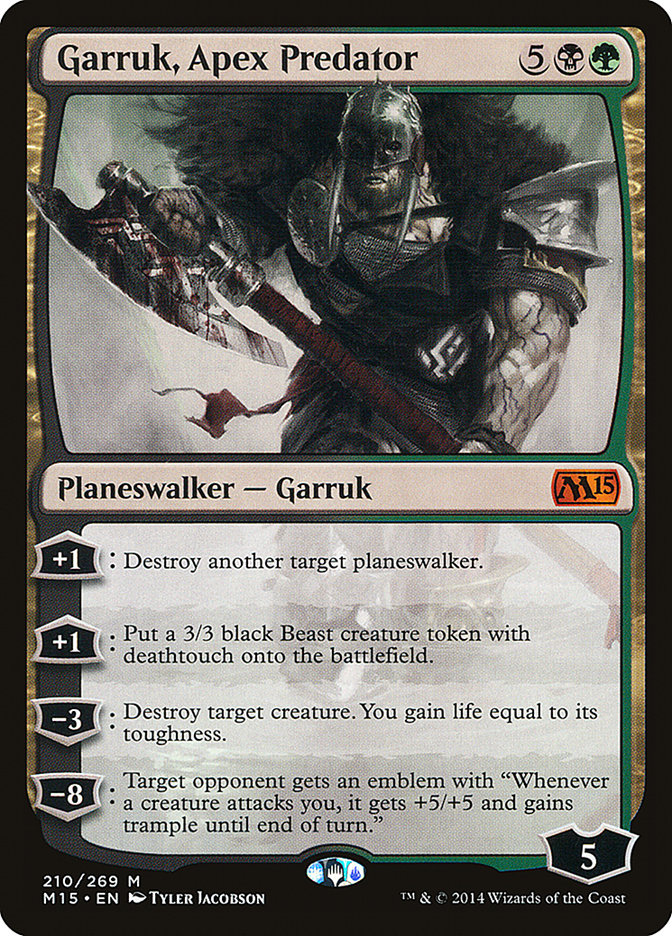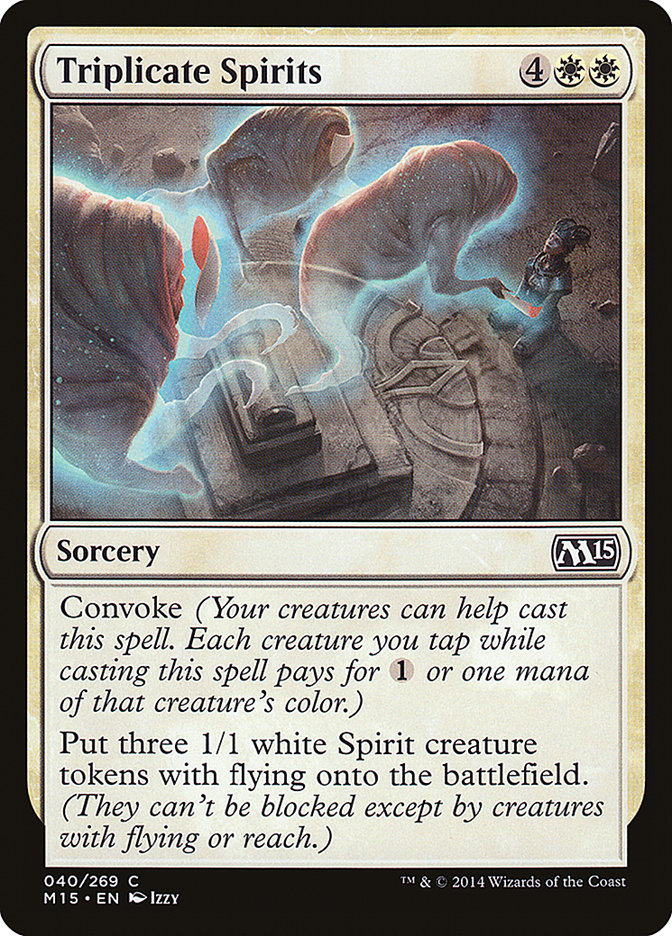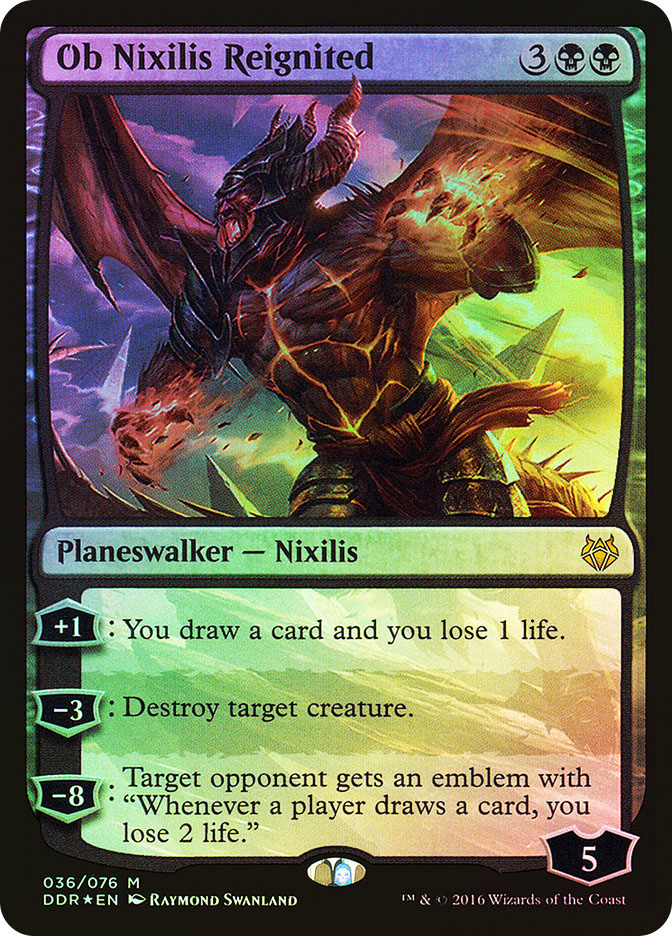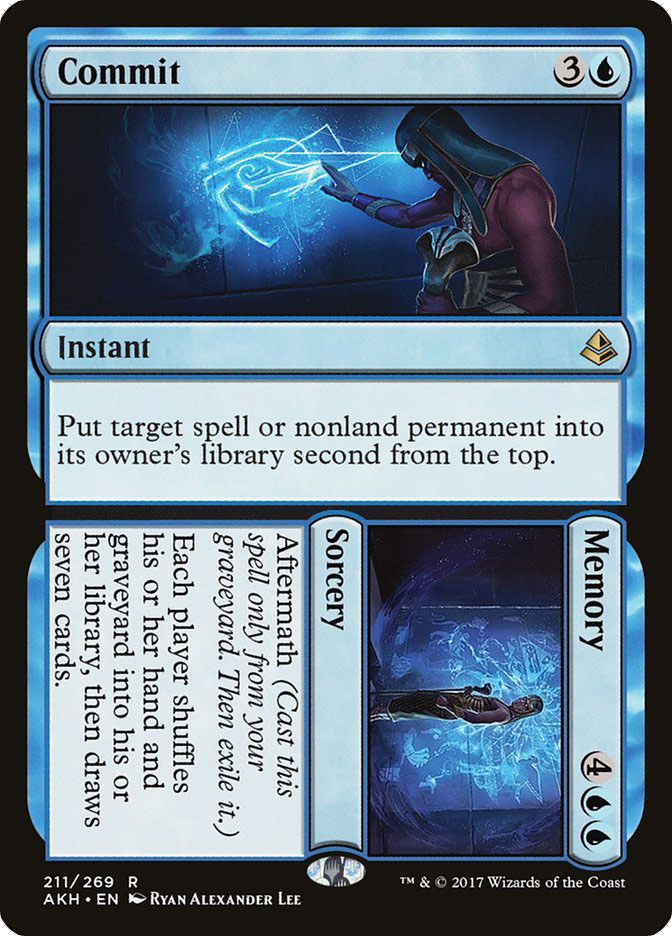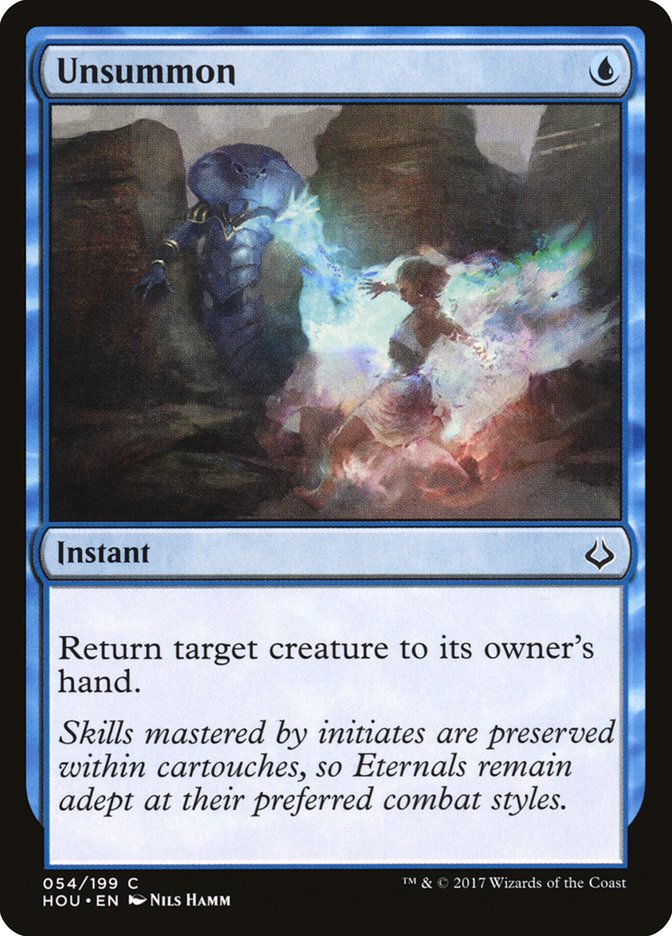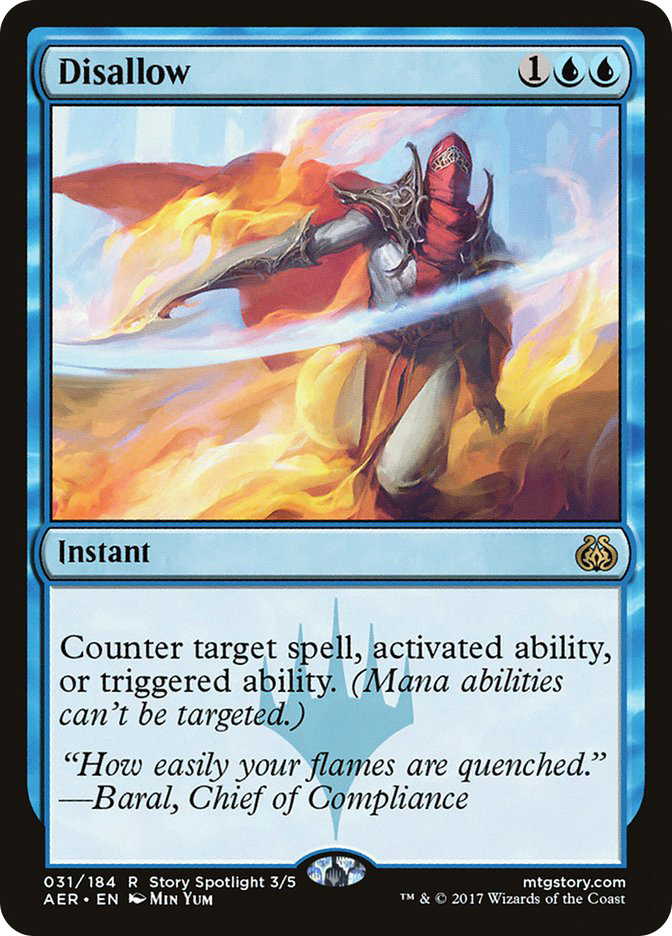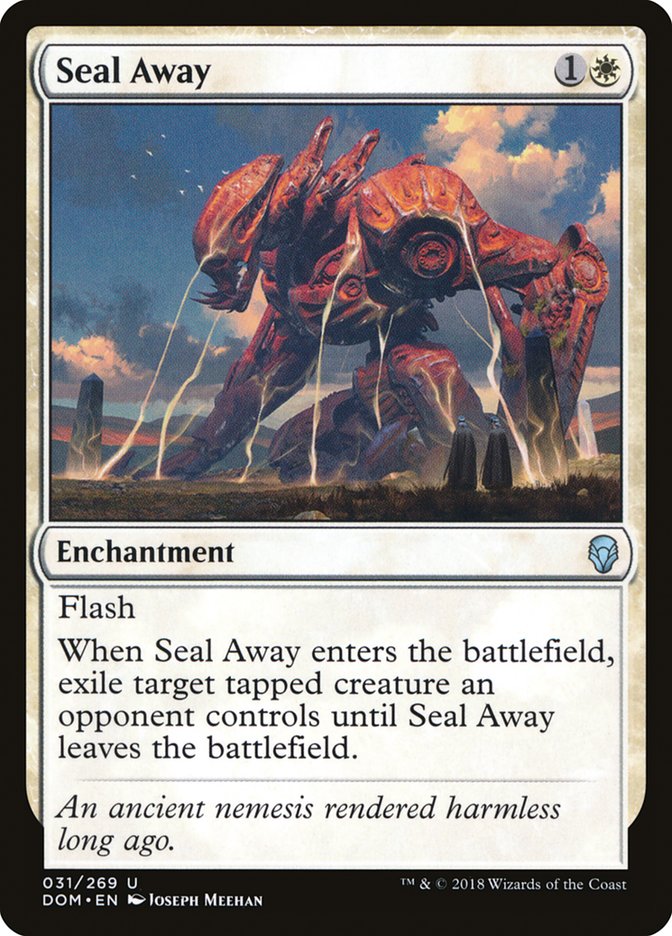Browsing the
Dominaria card image gallery,
it seems like one of the most powerful cards is Teferi, Hero of Dominaria.
Obviously the hero is going to be good, right?
I’ve been the spikiest of spike competitive player for so long that
sometimes I lose sight of what it means to enjoy Magic casually as a fan of
the art, lore, and even the sense of community. I can’t speak for all
professional players, but I prefer to look at the cards as pieces in a game
of chess and oftentimes, I don’t even know the rarity of a card or anything
behind the meaning of the name or the artwork.
This is especially true for me because every Pro Tour has six rounds of
Draft which means preparing for Limited is a hard part of my career. At Pro
Tour Magic 2015, William Jensen and I both made the top 8 with the
exact same 75 cards and it lead to
one of my favorite moments ever
where I got eighth place on tiebreakers at 12-4 when I was competing
against a couple other people with the exact same record.
For our Limited preparation for Pro Tour Magic 25, we did 25 individual
drafts on Magic Online, maybe five house drafts, and a one or two hour
Limited meeting. In the Limited meeting, we argued passionately about what
to take Pack 1 Pick 1 if you were to drafting the following two cards:
Teammate Paul Rietzl famously said, “I take Garruk because it’s on the
pack!” He was trying to
convey that because the game designers advertised the strength of the card
on the front of the
booster packaging, they have inside information that it’s very good. It’s a
funny story because he was dead wrong; Garruk was extra medium in that
format and Triplicate Spirits was better than all but ten or twenty cards
in the set.
Did I tell this story to mock Paul? A little, yeah, but the point is as a
competitive tournament player to need to remind yourself to boil the cards
down to stats and nothing else, even ignoring rarity. Just because the lore
says it’s going to be good doesn’t mean it’s any good. But how does Teferi,
Hero of Dominaria stack up? Is he good because he’s the hero of Dominaria
or despite it?
Teferi looks great to me. I wouldn’t go so far as to say busted, but it’s
on the stronger side and there’s no question in my mind about that. The
first thing that caught my attention was the fact that if your opponent
only has one creature on the battlefield, you can cast it and force them to
untap facing a planeswalker on an empty battlefield. This has been one of
the most common play patterns in Standard for as long as planeswalkers have
existed and all the planeswalkers I can think of that do this have been
widely adopted as solid options in Standard.
Ob Nixilis Reignited comes to mind, as most decks that could make black
mana had one
or two of this fella in their decklist somewhere because planeswalkers that
remove creatures
almost function like Flametongue Kavu. If you have a big creature and I
play Teferi, Hero of
Dominaria; Ob Nixilis Reignited; Chandra, Torch of Defiance; Liliana of the
Veil; or Jace, The
Mind Sculptor, I get to remove your threat and produce my own. It’s one of
the most efficient and reliable ways to seize the initiative in today’s era
of Constructed Magic. I’d argue that Standard as a format has been warped
by the existence of planeswalkers, and aggressive decks tend to overperform
as a result.
Teferi starts with four loyalty and when you cast it to remove a creature,
it’s going to end the turn on one loyalty. There are a plethora of
one-power haste creatures that can eliminate the advantage produced by
Teferi, but not all decks have access to a unique card type like this. All
decks can play Walking Ballista, and many might start to help make sure
Teferi doesn’t just run roughshod on the game, but it’s sometimes difficult
for control or midrange decks to have
the right answer at the right time, and some of the time Walking Ballista
needs to be traded as a
full card for Teferi after its ability has been used. This is the
definition of card disadvantage.
I’m this far into the strategic depth of Teferi, and I haven’t even
mentioned that its ability can
remove not just creatures but any nonland permanent. I’ve been going ham
lately raving about
how good Commit is because it’s giving blue this ability to effectively
destroy artifacts
and enchantments. Time is money in real life and the same is true for games
of Magic, as I don’t need to destroy a God-Pharaoh’s Gift to manage it if I
can bounce it to buy myself enough time to increment other advantages which
let me win the game. By the time God-Pharaoh’s Gift shows back up, it won’t
be good enough anymore, which means I basically did destroy it.
It’s like if I use Unsummon on a 7/7 and if I win before the 7/7 gets
recast, I basically exiled it for one mana. I like to use this type of
theory when evaluating bounce in Limited, and experience shows us that
bounce is better in aggro decks than it is in control decks. While Teferi
doesn’t literally destroy nonland permanents, it does remove them from the
battlefield (and hand
zone!) with the only downside being that it’s only temporary. Third from
the top is huge, as three turns in a game of Constructed is not to be
underestimated, not to mention the obvious synergy with Field of Ruin.
The plus one ability also seems to slot in perfectly with what a U/W
Control deck wants. Often when I talk to my teammates, we like to highlight
a card’s strengths and weaknesses when
evaluating it. Something I might catch myself saying is “this looks pretty
strong for being a
five casting-cost sorcery.” Of course, it’s not literally a sorcery, but
it’s to keep in mind that
adding a card to a U/W Control deck that you can only cast on your own turn
is normally a
huge cost.
The reason more decks in Standard don’t play four copies of Disallow is
they have too many cards that can only be cast at sorcery speed. The cost
of being unable to use a counterspell when your opponent casts a great
spell because you tapped out and the aftermath of being stuck with a
counterspell, a card that’s only use is to occupy space in your hand that
could be better spent occupied by a more versatile and reactive card, is so
incredibly high. U/W Control decks can get away with it because they try to
play cards that can be cast at instant speed, so they give themselves the
most optionality in a game. Throughout the history of blue control decks in
Magic, you can see that if they play a card that isn’t an instant, it’s
almost always one of the best options in the format for them. They only
play these types of cards if they feel they must.
Teferi breaks all the rules and gives you a two-mana rebate when you can
resolve it and use the
plus-one ability. Two mana is sorta the sweet spot in Standard too, as I
often advocate for cards like Censor, Essence Scatter, Negate, and
Revolutionary Rebuff. Seal Away also fits into this narrative as it’s a
two-mana answer to Hazoret the Fervent, Scrapheap Scrounger, Earthshaker
Khenra, and Adanto’s Vanguard. What Seal Away doesn’t do is exile Heart of
Kiran and that makes me very nervous. It also is a pipe dream to hope that
Seal Away will exile The Scarab God since when most people control this
card, they do everything in their power to protect it and that often means
not risking it in combat. That said, Seal Away screams efficiency and it
could still be a great option in smaller numbers even if it isn’t a total
game changer, and the fact that it pairs cleanly with Teferi is rather
convenient.
I strongly suspect Settle the Wreckage will be the most offensive card when
paired with Teferi.
No matter how you slice it, at the end of the day Settle the Wreckage will
always be at least a
Fog, as when you can cast it and it doesn’t get countered it will prevent
all combat damage dealt that turn and that’s a fact. Once you get to seven
lands, you can use Teferi to untap two and leave yourself with Settle the
Wreckage mana available, ensuring that you can untap the following turn
with the powerful planeswalker on the battlefield.
I always feel like when I have a card like Teferi or even Jace, the Mind
Sculptor out, all I need to do is prolong the game and as each turn goes
by, further cement my advantage. Sure, I could lose, but I know the late
game favors me. I use every card I must to give myself the opportunity to
use my planeswalker again and hope that my ensuing draw steps and
planeswalker advantage allow me to buy enough time to do it again next
turn. It’s as simple as that, and it’s a formula we’ve seen for years.
I’ll be honest: I’ve never read Teferi all the way to the end until exactly
this moment of me typing
and all I have to say is LOL. I rarely read the planeswalker ultimates
until I have them on the battlefield because often it’s just an
embarrassment of riches anyways. I may not be a learned man, but I know if
I have a Teferi on eight loyalty, the game is going exceptionally well for
me and even if it’s a weak ability, I’m likely a huge favorite to win.
Usually with planeswalker ultimates I like to slot them into categories of
“I win” or “I don’t win,” and this is absolutely in the “I win” category.
Chandra Torch of Defiance; Jace the Mind Sculptor; and Nissa, Sage Animist
are all ultimates that are clean “I wins.” Jace, Telepath Unbound; Angrath,
the Flame Chained; and Hautli, Radiant Champion are obviously “I don’t
win.”
The Teferi ability is amazing. I don’t really know what else there is to
say. I guess you could fizzle just like Chandra, Torch of Defiance, but
casting an Opt and pasting a Vindicate onto it should be lights out. If you
have a Glimmer of Genius, the party is just getting started.
Teferi, Hero of Dominaria looks like the real deal, and I can’t wait to
cast one.



